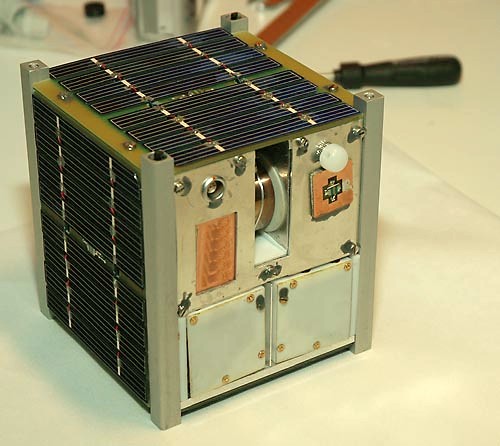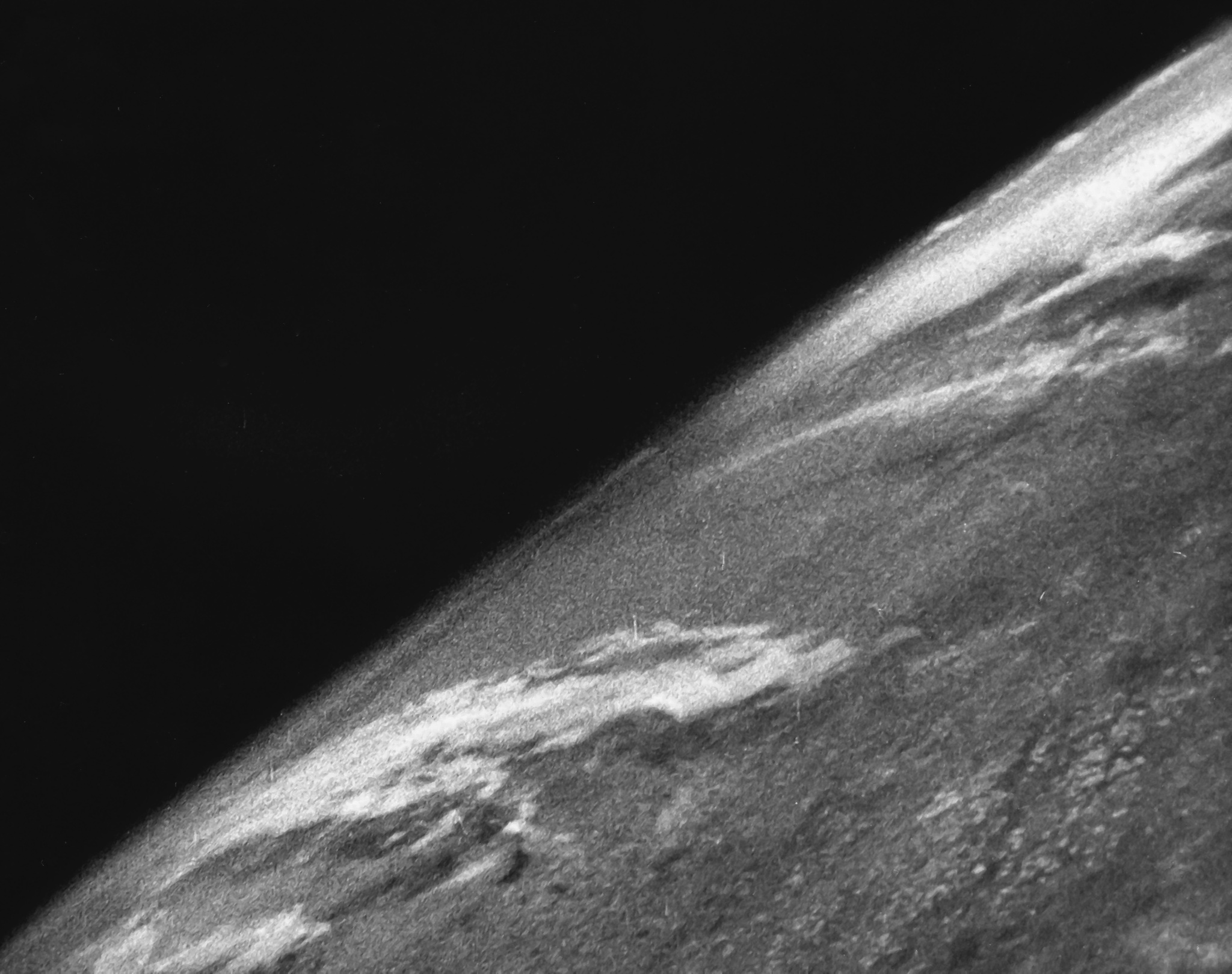|
Flock-1
Flock-1 is a CubeSat satellite constellation launched on 9 January 2014. The satellite is built in a CubeSat bus, and each constellation consists of 28 satellites. All instruments are powered by solar cells mounted on the spacecraft body, along with triple-folded wings, providing approximately 20 watts at maximal power. Launch Flock-1 constellation was launched from Mid-Atlantic Regional Spaceport Launch Pad 0, Wallops Island, on 9 January 2014 by an Antares 120 rocket. The satellites were deployed from the International Space Station (ISS) from 11 February 2014 to 28 February 2014. Another Flock start in January 2015 on a Falcon 9 launch vehicle. Mission The satellite is intended for commercial Earth observation Earth observation (EO) is the gathering of information about the physical, chemical, and biosphere, biological systems of the planet Earth. It can be performed via remote sensing, remote-sensing technologies (Earth observation satellites) or throu ... service. ... [...More Info...] [...Related Items...] OR: [Wikipedia] [Google] [Baidu] |
2014 In Spaceflight
In 2014, the maiden flight of the Angara A5, Antares 120 and Antares 130 took place. A total of 92 orbital launches were attempted in 2014, of which 88 were successful, two were partially successful and two were failures. The year also saw seven EVAs by ISS astronauts. The majority of the year's orbital launches were conducted by Russia, the United States and China, with 34, 23 and 16 launches respectively. Overview An Ariane 5 ES launched the ''Georges Lemaître'' Automated Transfer Vehicle, the last one of the series, which also marked 60 successfully completed Ariane 5 launches in a row. On 22 August 2014, Arianespace launched the first two Full Operational Capability Galileo satellites for the European satellite navigation system. A number of significant events in planetary exploration occurred in 2014, including the entry of the Rosetta spacecraft into orbit around the comet 67P/Churyumov–Gerasimenko in August 2014 and the deployment of the Philae lander to it ... [...More Info...] [...Related Items...] OR: [Wikipedia] [Google] [Baidu] |
Planet Labs
Planet Labs PBC (formerly Planet Labs, Inc. and Cosmogia, Inc.) is a publicly traded American Earth imaging company based in San Francisco, California. Their goal is to image the entirety of the Earth daily to monitor changes and pinpoint trends. The company designs and manufactures 3U-CubeSat miniature satellites called Doves that are then delivered into orbit as secondary payloads on other rocket launch missions. Each ''Dove'' is equipped with a high-powered telescope and camera programmed to capture different swaths of Earth. Each ''Dove'' Earth observation satellite continuously scans Earth, sending data once it passes over a ground station, by means of a frame image sensor. The images gathered by ''Doves'', which can be accessed online and some of which are available under an open data access policy, provide up-to-date information relevant to climate monitoring, crop yield prediction, urban planning, and disaster response. With acquisition of BlackBridge in July 2015, ... [...More Info...] [...Related Items...] OR: [Wikipedia] [Google] [Baidu] |
CubeSats
A CubeSat is a class of small satellite with a form factor of cubes. CubeSats have a mass of no more than per unit,, url=https://static1.squarespace.com/static/5418c831e4b0fa4ecac1bacd/t/5f24997b6deea10cc52bb016/1596234122437/CDS+REV14+2020-07-31+DRAFT.pdf , title=Cubesat Design Specification , publisher=California Polytechnic State University, San Luis Obispo, Cal Poly SLO , year=2020 , location=San Luis Obispo , pages=12 and often use commercial off-the-shelf (COTS) components for their electronics and structure. CubeSats are deployed into orbit from the International Space Station, or launched as secondary payloads on a launch vehicle. , more than 2,300 CubeSats have been launched. In 1999, California Polytechnic State University (Cal Poly) professor Jordi Puig-Suari and Bob Twiggs, a professor at Stanford University Space Systems Development Laboratory, developed the CubeSat specifications to promote and develop the skills necessary for the design, manufacture, and testing of ... [...More Info...] [...Related Items...] OR: [Wikipedia] [Google] [Baidu] |
Satellite Imagery
Satellite images (also Earth observation imagery, spaceborne photography, or simply satellite photo) are images of Earth collected by imaging satellites operated by governments and businesses around the world. Satellite imaging companies sell images by licensing them to governments and businesses such as Apple Maps and Google Maps. History The first images from space were taken on Sub-orbital spaceflight, sub-orbital flights. The US-launched V-2 flight on October 24, 1946, took one image every 1.5 seconds. With an Apsis, apogee of 65 miles (105 km), these photos were from five times higher than the previous record, the 13.7 miles (22 km) by the Explorer II balloon mission in 1935. The first satellite (orbital) photographs of Earth were made on August 14, 1959, by the U.S. Explorer 6. The first satellite photographs of the Moon might have been made on October 6, 1959, by the Soviet satellite Luna 3, on a mission to photograph the far side of the Moon. The Blue Marble ... [...More Info...] [...Related Items...] OR: [Wikipedia] [Google] [Baidu] |
Antares (rocket)
Antares (), known during early development as Taurus II, is an American expendable medium-lift launch vehicle developed and built by Orbital Sciences Corporation (later Orbital ATK and Northrop Grumman) with financial support from NASA under the Commercial Orbital Transportation Services (COTS) program awarded in February 2008, alongside the company's automated cargo spacecraft, Cygnus. Like other launch vehicles developed by Orbital, Antares leveraged lower-cost, off-the-shelf parts and designs. The first stage is liquid fueled, burning RP-1 (kerosene) and liquid oxygen (LOX). Due to Orbital's limited experience with large liquid stages, the construction was subcontracted to the Ukrainian companies Pivdenne and Pivdenmash. Initially, the Antares 100 series used refurbished NK-33 engines, remnants of the Soviet N1 moon rocket. However, after a catastrophic explosion, the Antares 200 series transitioned to newly built Russian RD-191 engines. Following Russia's in ... [...More Info...] [...Related Items...] OR: [Wikipedia] [Google] [Baidu] |
Commercial Imaging Satellites Of The United States
Commercial may refer to: * (adjective for) commerce, a system of voluntary exchange of products and services ** (adjective for) trade, the trading of something of economic value such as goods, services, information or money * a dose of advertising conveyed through media (such as radio or television) ** Radio advertisement ** Television advertisement * Two functional constituencies in elections for the Legislative Council of Hong Kong: **Commercial (First) **Commercial (Second) * ''Commercial'' (album), a 2009 album by Los Amigos Invisibles * Commercial broadcasting * Commercial style or early Chicago school, an American architectural style * Commercial Drive, Vancouver, a road in Vancouver, British Columbia, Canada * Commercial Township, New Jersey, in Cumberland County, New Jersey See also * * Comercial (other), Spanish and Portuguese word for the same thing * Commercialism Commercialism is the application of both manufacturing and consumption towards personal usage ... [...More Info...] [...Related Items...] OR: [Wikipedia] [Google] [Baidu] |
Spacecraft Launched In 2014
A spacecraft is a vehicle that is designed spaceflight, to fly and operate in outer space. Spacecraft are used for a variety of purposes, including Telecommunications, communications, Earth observation satellite, Earth observation, Weather satellite, meteorology, navigation, space colonization, Planetary science, planetary exploration, and Space transport, transportation of Human spaceflight, humans and cargo spacecraft, cargo. All spacecraft except single-stage-to-orbit vehicles cannot get into space on their own, and require a launch vehicle (carrier rocket). On a sub-orbital spaceflight, a space vehicle enters space and then returns to the surface without having gained sufficient energy or velocity to make a full Geocentric orbit, Earth orbit. For orbital spaceflights, spacecraft enter closed orbits around the Earth or around other Astronomical object, celestial bodies. Spacecraft used for human spaceflight carry people on board as crew or passengers from start or on orbit ... [...More Info...] [...Related Items...] OR: [Wikipedia] [Google] [Baidu] |
Earth Observation
Earth observation (EO) is the gathering of information about the physical, chemical, and biosphere, biological systems of the planet Earth. It can be performed via remote sensing, remote-sensing technologies (Earth observation satellites) or through direct-contact sensors in ground-based or airborne platforms (such as weather stations and weather balloons, for example). According to the Group on Earth Observations (GEO), the concept encompasses both "space-based or remotely-sensed data, as well as ground-based or In situ#Earth and atmospheric sciences, in situ data". Earth observation is used to monitor and assess the status of and changes in natural environment, natural and built environments. Terminology In Europe, ''Earth observation'' has often been used to refer to satellite-based remote sensing, but the term is also used to refer to any form of observations of the Earth system, including in situ and airborne observations, for example. The GEO, which has over 100 member coun ... [...More Info...] [...Related Items...] OR: [Wikipedia] [Google] [Baidu] |
Launch Vehicle
A launch vehicle is typically a rocket-powered vehicle designed to carry a payload (a crewed spacecraft or satellites) from Earth's surface or lower atmosphere to outer space. The most common form is the ballistic missile-shaped multistage rocket, but the term is more general and also encompasses vehicles like the Space Shuttle. Most launch vehicles operate from a launch pad, supported by a missile launch control center, launch control center and systems such as vehicle assembly and fueling. Launch vehicles are engineered with advanced aerodynamics and technologies, which contribute to high operating costs. An orbital spaceflight, orbital launch vehicle must lift its payload at least to the boundary of space, approximately and accelerate it to a horizontal velocity of at least . Suborbital spaceflight, Suborbital vehicles launch their payloads to lower velocity or are launched at elevation angles greater than horizontal. Practical orbital launch vehicles use chemical prope ... [...More Info...] [...Related Items...] OR: [Wikipedia] [Google] [Baidu] |
Falcon 9
Falcon 9 is a Reusable launch system#Partial reusable launch systems, partially reusable, two-stage-to-orbit, medium-lift launch vehicle designed and manufactured in the United States by SpaceX. The first Falcon 9 launch was on June 4, 2010, and the first commercial resupply mission to the International Space Station (ISS) launched on October 8, 2012. In 2020, it became the first commercial rocket to launch humans to orbit. The Falcon 9 has been noted for its reliability and high launch cadence, with successful launches, two in-flight failures, one partial failure and one pre-flight destruction. It is the most-launched American orbital rocket in history. The rocket has two-stage-to-orbit, two stages. The first (booster) stage carries the second stage and payload to a predetermined speed and altitude, after which the second stage accelerates the payload to its target orbit. The Booster (rocketry), booster is capable of Vertical takeoff, vertical landing, landing vertically to fa ... [...More Info...] [...Related Items...] OR: [Wikipedia] [Google] [Baidu] |






